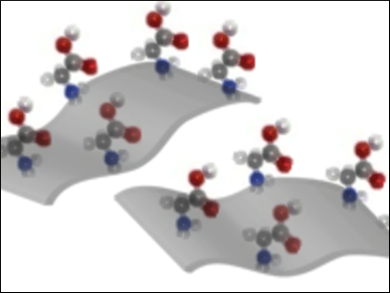Two-dimensional (2D) and few-layered materials have attracted significant attention in recent years due to their interesting and useful properties, which can differ significantly from their bulk counterparts. After successful research into graphene, the field has broadened to include other classes of materials, such as transition metal dichalcogenides and functionalized materials. The covalent functionalization of few-layered MoS2, for example, has typically involved a two-step synthesis: liquid phase exfoliation followed by functionalization.
C. N. R. Rao, International Centre for Materials Science (ICMS), Bangalore, India, Masahiro Yoshimura, National Cheng Kung University, Tainan, Taiwan, and colleagues have developed a one-step simultaneous exfoliation and covalent functionalization method for MoS2, induced by amino acids in water. The method combines in-situ surface functionalization by amino acids with exfoliation by sonication. The amino acids play a vital role in the exfoliation: the bulk MoS2 surface could be activated via formation of amino acid complexes, and the amino acids could be intercalated between the layers of bulk MoS2.
The developed exfoliation/functionalization technique is simple, uses non-toxic chemicals and inexpensive instruments, and could also be applicable for other 2D materials. Moreover, the resulting hybrid materials are interesting for biomedical applications, as well as for catalytic, sensor, and energy applications.
- One-step simultaneous exfoliation and covalent functionalization of MoS2 by amino acids-induced solution processes,
Masahiro Yoshimura, Satheeshkumar Elumalai, Bandyopadhyay A, Sreedhara M.B, Pati S.K, Rao C.N.R.,
ChemNanoMat 2017.
DOI: 10.1002/cnma.201600363

![Synthesis of [c2]Daisy Chains via Mechanochemistry](https://www.chemistryviews.org/wp-content/uploads/2025/04/202504_RotaxanesWithSolidStateMechanochemistry-125x94.png)

